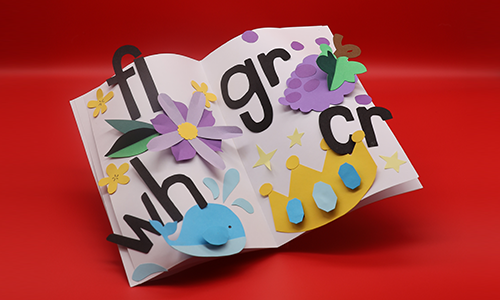
If you are an elementary school teacher, chances are you have heard the term “leveled readers.” But have you ever stopped to ponder what is being leveled in leveled readers?
Educators intuitively know that some books are harder than others. For decades, researchers have found ways to quantify the differences in texts via quantitative and qualitative features. These include things like sentence length and structures, word counts, and familiarity of the vocabulary used. This approach to text analysis has resulted in a number of leveling systems including things like Lexile, Flesch-Kincaid, Spache, and Coh-Metrix.
Putting texts in “levels” essentially means trying to sequence those texts for level of challenge, depending on those quantitative and qualitative features. The logic when this practice started was that students learn to tackle more and more challenging texts as they move up the scale. In some respects, that is true. However, what we overlooked with leveled readers is that not all texts are intended to teach students how to read the words on the page. Current research suggests that students need explicit and systematic instruction on the hows of reading, including an emphasis on phonemic awareness, phonics, grapheme-phoneme (i.e., spelling-sound correspondence) knowledge, and practice with decodable text. And it’s important to note: Leveled texts are not meant to be decodable! To learn more about the differences between leveled texts and decodable texts, read“The what, why, and when of decodable and leveled texts.”
Drawbacks of leveled readers
Included in the umbrella of leveled readers are predictable texts. You know the ones:
I see a giraffe at the zoo.
I see a penguin at the zoo.
I see a hippopotamus at the zoo.
I see a gorilla at the zoo.
And so on.
While these predictable texts can be fun for kids and may give them a sense of accomplishment, they encourage behaviors we know are not helpful for learning to read. It is generally easy for kids to memorize the pattern and not actually read the words. Predictable books may have some decodable words (like “see” and “zoo” in the example), and they may also include harder words that may or may not be decodable (like the animal types). What this means is kids may be memorizing the pattern, relying on the pictures, and not actually reading the words. When presented with a challenging text they must actually read, they may not have developed the skills needed to navigate the text. Decodable texts, on the other hand, allow students to practice word reading and text structures that are translatable to more challenging texts.
Another drawback of leveled readers is they may be inadvertently used to keep some students from accessing grade-level texts. Just because a book has a level on it doesn’t—and shouldn’t—mean it’s only used for certain students. This has been one of the bigger revelations in the research literature. One of the unintended consequences of using leveled readers is that it prevents students from grappling with challenging texts, which prevents students from moving up that complexity scale. Students need access to grade-level text, and shoehorning kids into rigid reading levels that might be below grade level can get in the way of that.
Leveled reading can also affect student motivation. Keeping students pigeonholed in a single reading level or leveled group can affect their enthusiasm for reading and desire to pick up books for pleasure. Students who are confined to books within their assigned level may become bored because the content is uninteresting or repetitive, which can affect motivation to read. We know that when kids are presented with more complex texts, they rise to the occasion (with proper support from their teacher or more capable peers).
These drawbacks highlight the need for a more flexible and engaging approach to reading instruction that can cater to individual interests and promote a love for reading.
Getting the most out of leveled readers
Does this mean you have to throw out all those leveled readers? Of course not! Books are books, and they have many uses. You don’t have to throw them away. But we do encourage you to think about relying on a reduce, recycle, upcycle framework.
Reduce
Set a goal to reduce using leveled readers as primary texts. Instead, think about using them to intentionally teach skills based on what the book has to offer.
- Students can use leveled readers for fluency and prosody practice. Repeated reading protocols support vocabulary development and encourage appropriate phrasing and intonation, which lead to increased comprehension. Our “Fluency protocol for upper grades” could easily be adapted for using leveled readers in these ways with younger students.
- Leveled readers can be used to point out examples of qualitative features or teach new vocabulary.These books often have qualitative features, such as structure and organization, as well as vocabulary that can be explicitly taught. Just remember that they shouldn’t be used for small-group leveled focus.
Recycle
Think of different ways leveled readers can be used as-is in your classroom.
- Add leveled readers to your classroom library shelves, and prioritize books on topics likely to excite your students. Volume of reading is an important element of improving reading achievement. When students have choice in what they read, they tend to read more. Although a majority of a student’s instruction diet should center around grade-level text, an interest-based snack still adds to the volume.
- Add leveled readers to topic-based collections of books students can use to support solidifying background knowledge and building vocabulary and knowledge. Leveled readers approached in this way provide a great opportunity for students to compile facts and evidence from across multiple sources of information.
Upcycle
Think about new ways to use leveled readers. The Right to Read project has a lot of great suggestions for repurposing leveled readers in your classroom.
- Use leveled texts for creative extensions. Have students rewrite the story in a leveled reader from a different perspective, use the pictures as story starters, or add dialogue, speech, or thought bubbles.
- Go on a text scavenger hunt. If you and your students are working on specific conventions such as sentence combining, figurative language, or grammar, have students find examples in leveled readers. They can be a rich resource for modeling specific features.
Give it a go!
Leveled readers don’t have to be relegated to the dust bin. Yes, they are problematic for teaching kids to crack the code and learn to pull all words off the page. But they can still serve a purpose if you are intentional about how they are used. So, if you have them, find ways to reduce, recycle, and upcycle your leveled readers.







